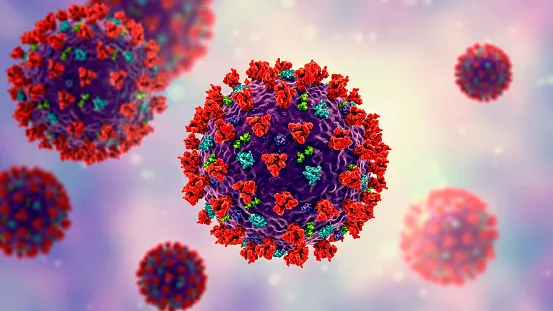According to The UKHSA (The UK Health Security Agency), it warns the brits to take care of the winter viruses’ attacks, it is also giving a definition for every virus and the differences among them. UKHSA said respiratory syncytial virus (RSV) is a major respiratory virus that is common over the winter period, typically November to February, and can spread through coughs and sneezes. Symptoms include cough, wheezing, shortness of breath, tiredness and fever.
While the symptoms are mild for many, RSV can cause bronchiolitis in infants, which can make it difficult for them to breathe and feed. RSV can also be severe in older adults, causing pneumonia and flare-ups of existing lung disease and other long-term conditions.

Flu is a winter season disease just worse than ordinary cold
Flu is a viral infection affecting the nose, throat and lungs, mostly during the winter months. It is far worse than an ordinary cold, which usually causes a runny nose, sneezing, watery eyes and throat irritation. Symptoms of a cold usually occur gradually without causing a fever or body aches, which usually occur with flu.
Flu can lead to serious illness, especially in children, with more than 8,000 hospitalizations last winter. Older people, those with a weakened immune system, and people with long-term health conditions are at higher risk. Over the past two winters, at least 18,000 deaths were associated with flu, the UKHSA said.

COVID-19 is not as severe as during the early years of the pandemic
While for most people COVID-19 is not as severe as during the early years of the pandemic, the virus is still causing severe illness, hospitalizations and deaths – particularly among those with a weakened immune system and certain long-term health conditions, as well as older people. It is normal and expected for viruses to genetically change over time and the new COVID-19 variants, much like previous variants, can spread easily through droplets released when an infected person coughs, sneezes or speaks.
The UKHSA said COVID symptoms had changed over time. Many people now experience cold-like symptoms, but some will also experience fever or chills, continuous cough, shortness of breath, tiredness, body aches, headache, sore throat, blocked nose, loss of appetite, nausea, diarrhea, or change in sense of taste or smell.

Norovirus is a viral stomach bug that causes vomiting and diarrhea
Norovirus, also called the “winter vomiting bug”, is a viral stomach bug that causes vomiting and diarrhea. It can be very unpleasant, but usually goes away in about two days, the UKHSA said, adding: “This season we are experiencing the highest number of norovirus cases since our current reporting system began.”
The main symptoms of norovirus are feeling sick (nausea), diarrhoea and being sick (vomiting). You may also have a high temperature, headache and aching arms and legs. The symptoms start suddenly within one to two days of being infected and you can usually treat yourself or your child at home. The most important thing is to rest and have lots of fluids to avoid dehydration. You will usually start to feel better in two to three days. Vulnerable groups, such as the very young, elderly or immunocompromised people, are more at risk of severe or prolonged illness and may need to seek medical treatment.
The UKHSA added: “It is very important to stay off school or work until you have not been sick or had diarrhoea for at least two days. You also should not prepare food for others during that period as this is when you’re most infectious. You should also not visit hospitals or care homes during this time.”

Rhinovirus – the ‘common cold’
Rhinovirus causes what we know as the common cold, the UKHSA said. Cold symptoms come on gradually over two to three days.
The main symptoms include a blocked or runny nose, sneezing, a sore throat, a hoarse voice, a cough, feeling tired and unwell. You may also have a high temperature, aching muscles, a loss of taste and smell and a feeling of pressure in your ears and face.
Symptoms of a cold can last longer in young children. They may also be irritable, have difficulty feeding and sleeping, breathe through their mouth, and get sick after coughing. You can get more information on telling the difference between colds and flu via the NHS website.
Adenovirus, parainfluenza and human metapneumovirus (hMPV)
The UKHSA said: “These three viruses cause a wide range of symptoms similar to those of a cold. Parainfluenza viruses are common causes of respiratory infections in infants, young children, older adults, and people with weakened immune systems.
“Adenoviruses and hMPV typically cause mild, cold-like illnesses in people of all ages. They are seen throughout the year but can spread more easily in winter.”
